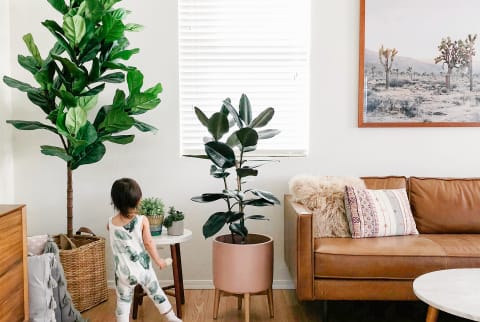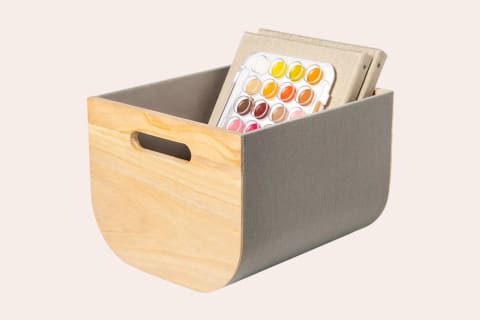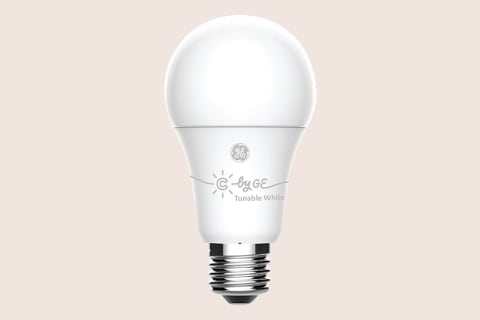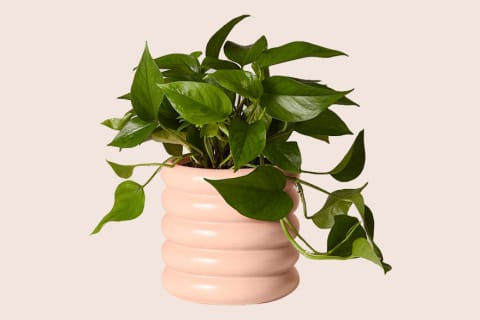Advertisement

We often call our home our sanctuary, but sometimes the reality is a completely different story. (How many sofas cushions can one dog destroy, really? Asking for a friend.)
From air quality and smells to the furniture and feng shui of our spaces, there’s a lot about our interiors that can mess with our mood, even our own health. Below, we take a look at three things in have a major effect on our mental health and headspace in particular.
1. Clutter
Tidying up is having a moment, sure, but the benefits of decluttering has science on its side. A recent study1 published in the journal Current Psychology found that the presence of household clutter is strongly linked to procrastination and even life dissatisfaction in older adults. It’s just the latest in a growing body of research on clutter’s negative physiological effects, including increased levels of cortisol, the stress hormone.
Basically, our brain on clutter is an inhibited one: We’re less creative, productive, and focused. Experts agree that taking just a few minutes a day to maintain a more organized space can improve your emotional attitude and clear your mind, with studies even revealing that folks who keep less messy homes tend to be healthier. With help from a few organizational goods, like chic containers and other easy storage solutions, your physical space—and mental outlook—can take on a whole new lightness.
2. Lighting
Experts agree: Getting quality sleep is one of the most important things we can do for our minds, our bodies, our brain function, even our longevity. But it’s not as simple as buying the coziest sheets and setting a loud alarm. Case in point: More than a third2 of American adults don’t get enough sleep, and one in four say they sleep poorly at least 15 nights every month. A powerful, science-backed way support our bodies natural circadian rhythm, or sleep/wake cycle, is optimizing the light in our homes for the natural time of day.
Our melatonin levels—the hormone released to ease our bodies into a sleeping state—adjust based on our exposure to light: Blue light in particular can suppress melatonin production and make you feel more awake. So, a high blue light in the morning can help with waking up and feeling energized, while eliminating blue light by changing color to a golden glow at the end of the day can help signal melatonin production. It’s why our phones and computers have that handy “night mode” setting for bedtime.
Another fascinating impact of light on how we think and feel? One study3 published in the Journal of Consumer Psychology study found that the brighter the light, the more intense a person’s emotions—both positive and negative—become. So, dimming down the lights may help us think and react more clearly.
Next time one of your bulbs burn out, swap in a light temperature-tunable, brightness-dimmable LED like C by GE’s Tunable White LED Smart Bulbs. Besides the energy savings and simply lasting a lifetime longer than a dinky incandescent ever will, the Bluetooth-enabled bulb lets you use your smart phone or your own voice to change both the temperature and brightness of your lighting, even if you’re away from home. With the freedom to tune your color from cool to warm, emulating natural light, you can find your perfect white light to create the mood you want, support your natural sleep/wake cycle, and complement your space to boot.
3. Color
This is a big one. Whether we realize it or not, color has a deep effect on our mood, behavior, and stress levels4. In fact, color psychology5 is an entire science used by everyone from therapists to marketers to understand how color impacts us mentally, emotionally, and physiologically. So, choose the colors in your home wisely. Here are some things to consider:
- Reds, oranges, and yellows evoke active emotions (aka they’re physically arousing) and have a stimulating and energizing effect.
- Greens are associated with happiness and restfulness, and can even enhance recall of positive memories.
- Blues are calming, centering, and comforting, and have been linked to low anxiety levels and creativity.
- Brighter colors (like whites, pinks, purples, blues, and greens) tend to elicit more positive responses than darker colors (like browns, greys, and black).
If starting a new paint job or buying new furniture isn’t in the cards, you can easily inject more calming color into your environment with living greenery or fresh flowers. GE even makes Full Color LED Smart Bulbs that you can tune to literally millions of different colors, so you can change up the vibe of your space from peaceful to energizing to romantic with a few taps on your phone. Further proof that transforming your living space—and headspace—is as simple as a few easy tweaks.
Shop this story:
5 Sources
- https://link.springer.com/article/10.1007%2Fs12144-017-9679-4
- https://www.cdc.gov/mmwr/volumes/65/wr/mm6506a1.htm?s_cid=mm6506a1_w
- https://www.sciencedirect.com/science/article/abs/pii/S1057740813001174
- https://www.ncbi.nlm.nih.gov/pmc/articles/PMC6120989/
- https://www.ncbi.nlm.nih.gov/pmc/articles/PMC4123920/



